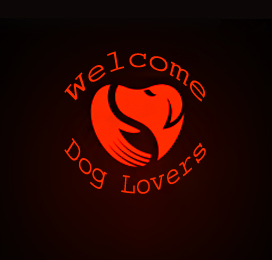Why does a clash occur in a Pack?
6 small mistakes can make mess in the pack
A proper rank hierarchy in a pack is essentially necessary. Most clashes and conflicts occur when two or more members in a pack are not clear about their ranking. It is natural in dogs to be able to choose their alfa member the pack leader, and is not wise for you to select a dog to play the dominant role in the pack. Conflicts occur when confusion arises about their position. The owner is the best person who can prevent fights within a pack. There can be a number of faults of an owner that can encourage his dogs to get in a fight, for instance:
Mistake 1 - Treating all dogs equally: We do not suggest bringing in distinction in terms of love and care. All dogs of a pack should equally cared for. We suggest NOT treating them equally means supporting the dominating member in his or her dominance, unless he/she is breaking the pack rule. Supporting his dominion is rather important and should be restricted to certain preferences such as, getting food before the other pack members (however, all dogs should get their required share of food), getting pat before the beta members, allowed to get out to play before others, and so on
Mistake 2 - Trying to Choose your dominating member: This is the worst kind of mistake a dog owner can ever make. Dogs in a pack are instinctively able enough to choose their pack leader. Dominance is established through interaction between themselves and through body languages. Any kind of interference in this will definitely lead to conflicts which may take a severe shape. Trying to get taller over the other members, delivering voluminous bark, territoriality etc. are the signs of establishing leadership. However, over aggression is a serious fault.
Mistake 3 - Confusion Dominating or Alfa member vs Pack Leader: Dominating or alfa member doesn't mean that he is the leader of the pack, although these have very close resemblance. Alfa member of the pack is the dog that has efficiently established the dominance, but leader of the pack is YOU. Even the most dominating male of the pack should act according to YOUR command and should act withing the chalked out boundaries/ limitations set by YOU. Once you loose the pack leadership position the likelihood of clashes with a pack will certainly increase.
However, in relation to this point - "Mistake 3 Confusion Dominating or Alfa member vs Pack Leader", there comes a whole lot of confusion as to how can you set yourself as a leader of the pack. Remembering the German dog trainer Colonel Konrad Most, "in the absence of compulsion neither human education nor canine training is feasible. Even the most soft-hearted dog-owner cannot get on terms with his idolized favorite without some form of compulsion." This means, some sort of force/compulsion is needed in order to establish a dominance or leadership in the pack.
Chances are there that the colonel had studied the natural methods of "alfa membership establishment in wild wolves", where the king wolf establishes the leadership in their natural hierarchical frame only through winning physical fights or may be influenced by the . Modern researcher like Professor Stanley Coren have a different view altogether.
"The idea of the alpha only seems to be valid in artificial packs", thinks sir Coren.
Mistake 4 - Not setting up a rule set for pack: It is important that you set rules (limitations and boundaries) for your pack in order to maintain discipline and prevent bad pack behaviors. Not been able to set rules for your pack proves that you are a bad pack leaders and chances are there that your pack members may be confused about the dos and don'ts and may get involved in clashes or conflicts.
Mistake 5 - New member introduced in the pack and left unsupervised: It is both a duty and a challenge to introduce a new dog into the pack. The challenge lies in efficiently socializing the new members to the existing ones in the pack, failing which may breed confusion and conflicts. If you find the new member is dominating by nature, it is wise to keep him or her kenneled separately. Remember, no two dominating members should be give a pack to rule. Such mistakes usually end up with an irreversible loss.
Mistake 6 - Not treating properly the old dog that used to dominate: When a dominant gets older he/she fails to retain his or her position. The leadership position is being taken over by another dominant member of the pack which breeds confusion and increases the chance of conflicts within the pack. It is important to help the old dog retain his or her position. For a dog that has become older with fragile health condition it is important to support his dominion as long as it doesn't break your pack rule.
Canine dominance instincts
Every single problem related to dog behavior and obedience are not related to dominance.
Understanding the canine behavior related to dominance is important. Dogs in the wild and in a pack form their own social structure that should not be disturbed. Through their interaction with each other they tend to choose the leader of the pack and each of them places themselves in distinctive ranks that is deserved by particular member, which form a unique dominance hierarchy. Dominating characteristics is the unique feature present in a particular dog and established by him or her in his or her own ways.
Conflicts and clashes are the outcome of serious disagreement between the members of a pack. This disagreement may be related to hierarchy or territoriality or ownership. Better the dominance hierarchy is maintained, smoother will be your dogs life in the pack. Here's yet another explanatory chapter on clash - Fights in Pack - Dominance vs Submissive Gesture and My Big Mistake

























0 comments:
Post a Comment